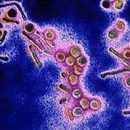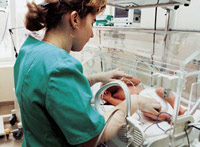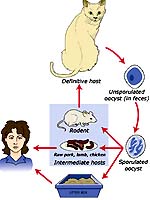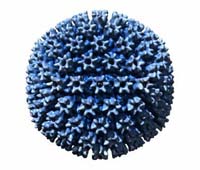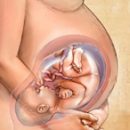Mycoplases and ureaplasma can exist in a small number and in the vagina of a healthy woman. In case of favorable conditions, a woman can develop mycoplasmosis and ureaplasmosis of genital organs.
Content
Mycoplases and ureaplasma are quite often the cause of inflammatory diseases of the genital organs in women. At the same time, these microorganisms may exist in a small amount and in the vagina of a healthy woman. Ureaplasm is found in 70-80% of women, and mycoplasma – in 30%. Mycoplasma and ureaplasma can be transmitted by contact path, from a partner to a partner during an unprotected intercourse. And after the transfer for a long time to exist in the vagina of a woman, not showing himself.
In the event of favorable conditions for the growth and development of these microorganisms, women may develop such diseases as mycoplasmosis and ureaplasmosis of genital organs. Supercooling, stressful situations, decrease in immunity, as a result of acute and chronic infections, the attachment of other sexually transmitted diseases can contribute to the development of mycoplasmosis and ureaplasmosis.
Manifestations of mycoplasma or ureaplasman infection
 Incubation period of mycoplasia and ureaplasmosis on average 5-7 days. During this period, the active growth and reproduction of the causative agent of infection occurs, and there is no disease manifestations. After the incubation period, an inflammatory process is developing. It can capture the urethra (urethra), anticipation of the vagina, bartoliniye gland, cervical cervical canal, uterine pipes and mucous membrane of the uterine cavity (endometrium). Urethritis, vaginitis and endocervicitis are more often developed.
Incubation period of mycoplasia and ureaplasmosis on average 5-7 days. During this period, the active growth and reproduction of the causative agent of infection occurs, and there is no disease manifestations. After the incubation period, an inflammatory process is developing. It can capture the urethra (urethra), anticipation of the vagina, bartoliniye gland, cervical cervical canal, uterine pipes and mucous membrane of the uterine cavity (endometrium). Urethritis, vaginitis and endocervicitis are more often developed.
A woman may notice a weak-dried itching, burning in the area of external genital organs, amplifying after urination or in non-compliance with personal hygiene rules, urine rapid. Allocations from the vagina are usually scarce and low. Belly wear a muddy mucosa. If a mycoplasmable or ureaplasmable endometrite and adnexitis develops, complaints about minor stupid pulling pains at the bottom of the abdomen, casting in the lower back. Woman can celebrate change of menstruation character. They become painful and abundant. Sometimes there are bleeding between monthly. For chronic mycoplasma or ureaplasma inflammation of the genital organs, the wave-like flow of exacerbations and attenuation periods.
What is the danger of mycoplasma and ureaplasmen infection? According to research in 30% of women suffering from mycoplasmosis and ureaplasmosis, there are spontaneous miscarriages in early terms, 15-20% - pregnancy does not develop. If the disease develops during pregnancy, the risk of occurrence increases «Measured» pregnancy, premature birth and complications of the postpartum period. In the case of infection of the child when passing through the generic paths of the sick mother, he in the future it is possible to develop a mycoplasma or ureaplasma infection of the respiratory system, genital organs.
Diagnosis of mycoplasma or ureaplasma infection
Diagnosis «Mycoplasmosis» or «Ureaplasmosis» It is raised on the basis of an analysis of the complaints of a sick woman, data of gynecological examination and results of laboratory research. To identify the pathogen, sowing to nutritional environments. This research method is quite accurate. In addition, to identify the presence of mycoplasma or ureaplasm in the body, as well as determining its type, such methods of laboratory diagnostics are used as an immunoassay analysis or a polymerase chain reaction method.
Treatment of mycoplasma or ureaplasma infection
Treatment of mycoplasma or ureaplasma infection of the genital organs of a woman is carried out by antibacterial agents that appoint the attending physician. An important condition for a favorable outcome is the simultaneous treatment of both partners. Otherwise the probability of re-infection is great.


